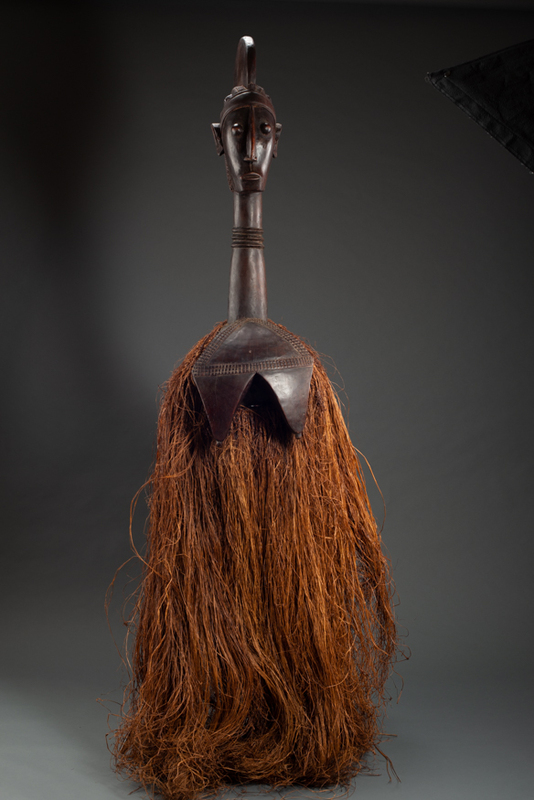The Baga people, 45,000 in total, live along the coast of Guinea Bissau, in villages divided into between two and four quarters, which are in turn divided into five or six clans. Traditionally, each village was headed by the eldest member of each clan, who met secretly, but today this system has been replaced by an elected mayor. Spiritually, they believe in a single God, konw as Kanu, who is assisted by Somtup, a male spirit, and A-Bol, a female spirit. Below them, the spirit A-Mantsho-nga-Tschol, who is often represented as a snake, serves as the patron of the two lowest grades of the To-lom society which oversees the different initiation ceremonies. Baga figures first appeared in the West in the 1950s after the conversion to Islam and the abandonment of traditional rites and beliefs. These circumstances meant that Western dealers were able to export Baga masks and headdresses. Today Baga people are attempting to revive their culture with the help of their elders. They are recreating the ceremonies and festivities that once gave their lives rhythm.
